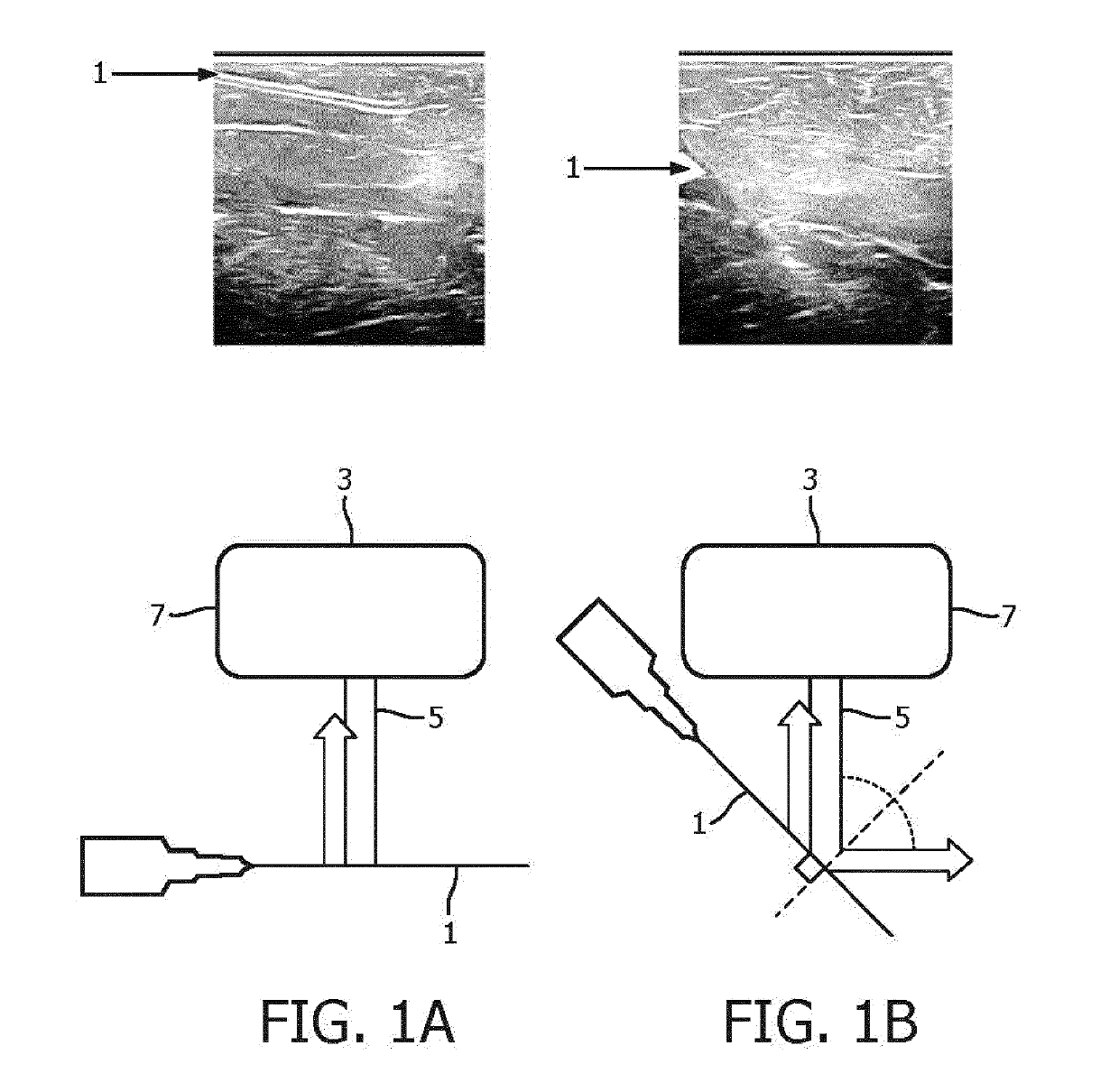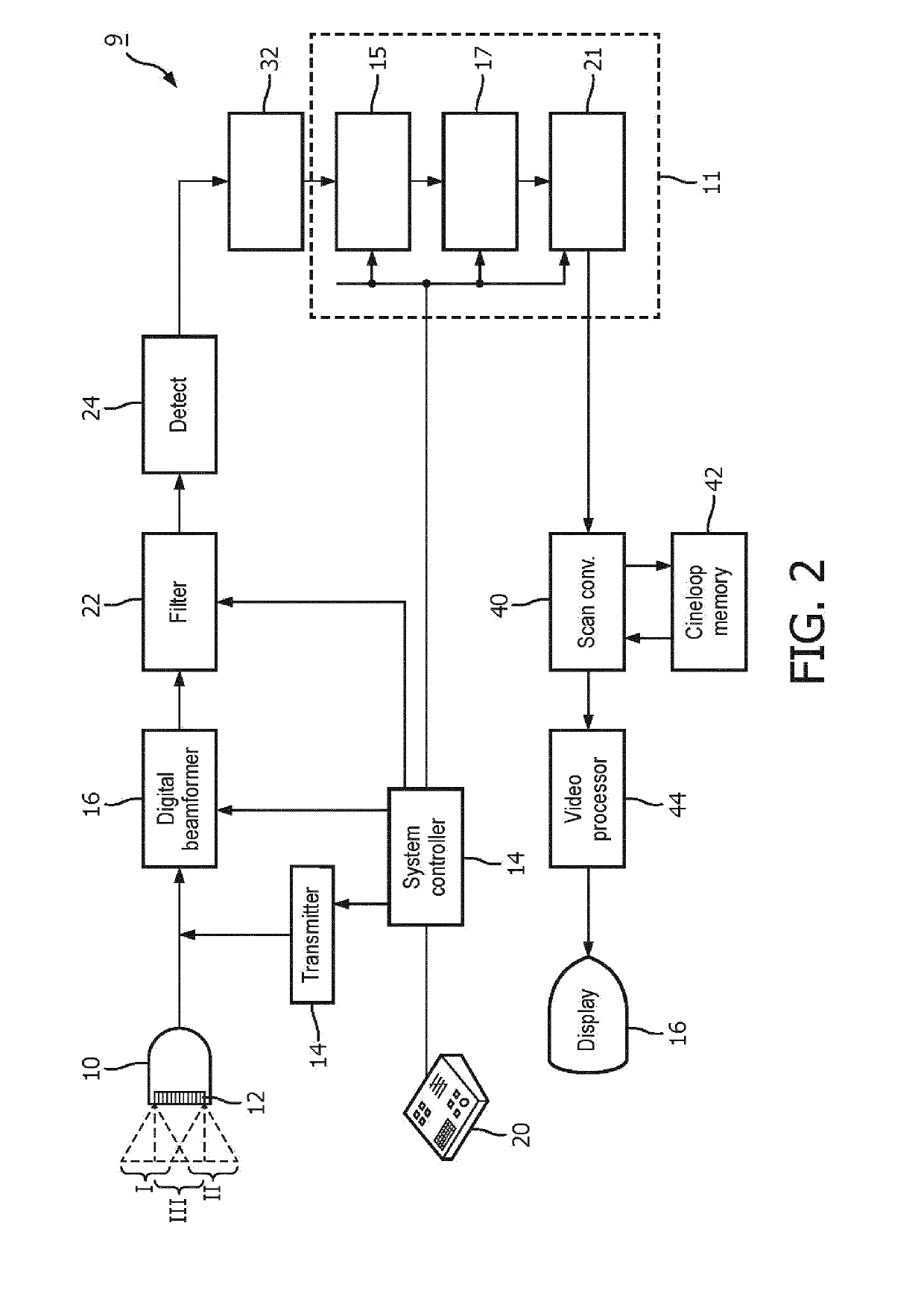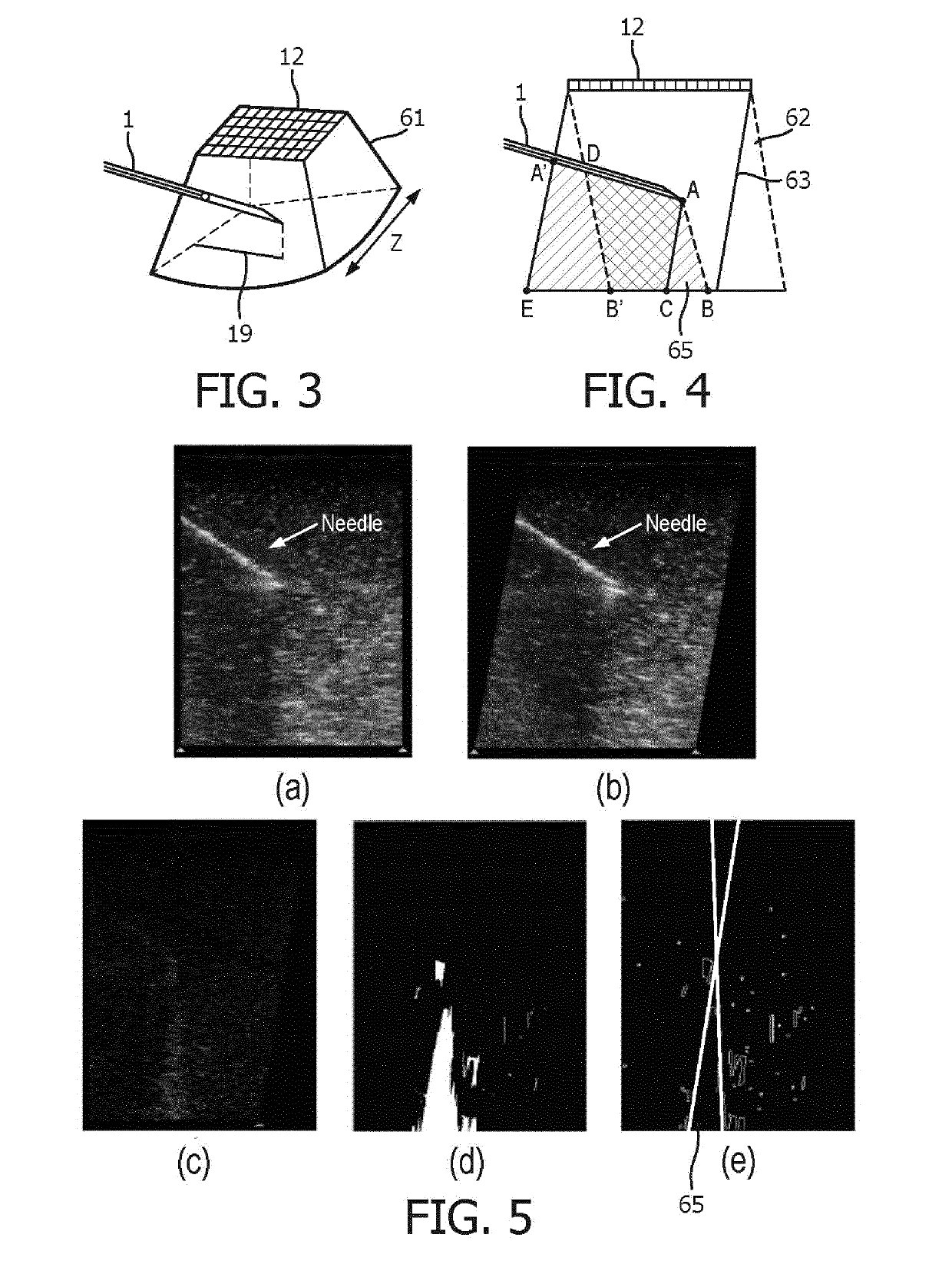An apparatus and method for detecting an interventional tool
a technology of interventional tools and apparatus, applied in the field of apparatus and methods for detecting tools, can solve the problems of excluding parts of the tool from the ultrasound image, misalignment of the tool, and limited 2d imaging field of view, and achieves the effect of rapid identification, less sensitive to noise, and rapid visualization of the tool to the operator
- Summary
- Abstract
- Description
- Claims
- Application Information
AI Technical Summary
Benefits of technology
Problems solved by technology
Method used
Image
Examples
Embodiment Construction
[0069]The apparatus of the present invention can be used either with 2D or 3D ultrasound imaging systems and probes. FIG. 2 shows a schematic block diagram of the ultrasound imaging system 9, which can be used in a combination with an apparatus 11 of the present invention. The ultrasound imaging system 9 has a probe 10 including an ultrasound transducer array 12 arranged to steer (transmit) ultrasound beams at different angles denoted by the dashed rectangle and parallelograms over a volumetric region. In this example, three groups of scanlines forming a plurality of ultrasound images are indicated in the drawing, labeled I, II and III with each group being steered at a different angle relative to the probe or emitting surface of the array 12. These ultrasound image data can be acquired using either a mechanically steered array or by means of electronic ultrasound beam steering. The transmission of the beams is controlled by a transmitter 14 which controls the phasing and time of ac...
PUM
 Login to View More
Login to View More Abstract
Description
Claims
Application Information
 Login to View More
Login to View More - R&D
- Intellectual Property
- Life Sciences
- Materials
- Tech Scout
- Unparalleled Data Quality
- Higher Quality Content
- 60% Fewer Hallucinations
Browse by: Latest US Patents, China's latest patents, Technical Efficacy Thesaurus, Application Domain, Technology Topic, Popular Technical Reports.
© 2025 PatSnap. All rights reserved.Legal|Privacy policy|Modern Slavery Act Transparency Statement|Sitemap|About US| Contact US: help@patsnap.com



